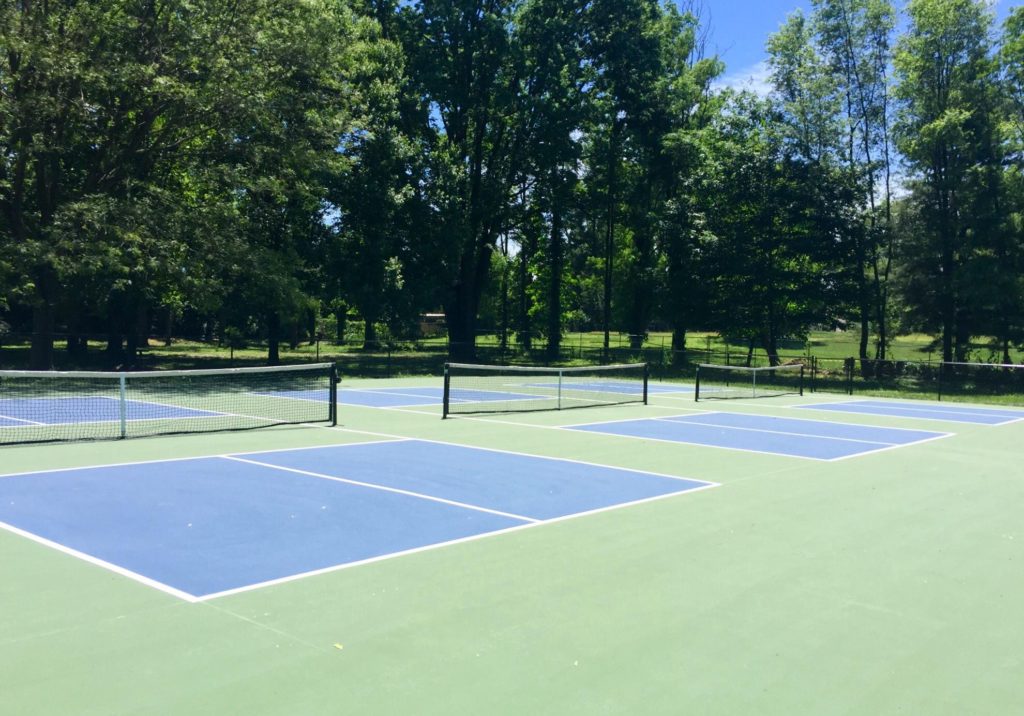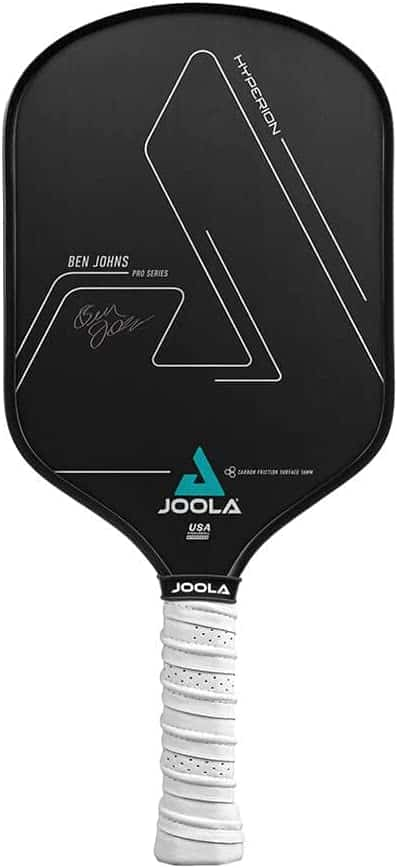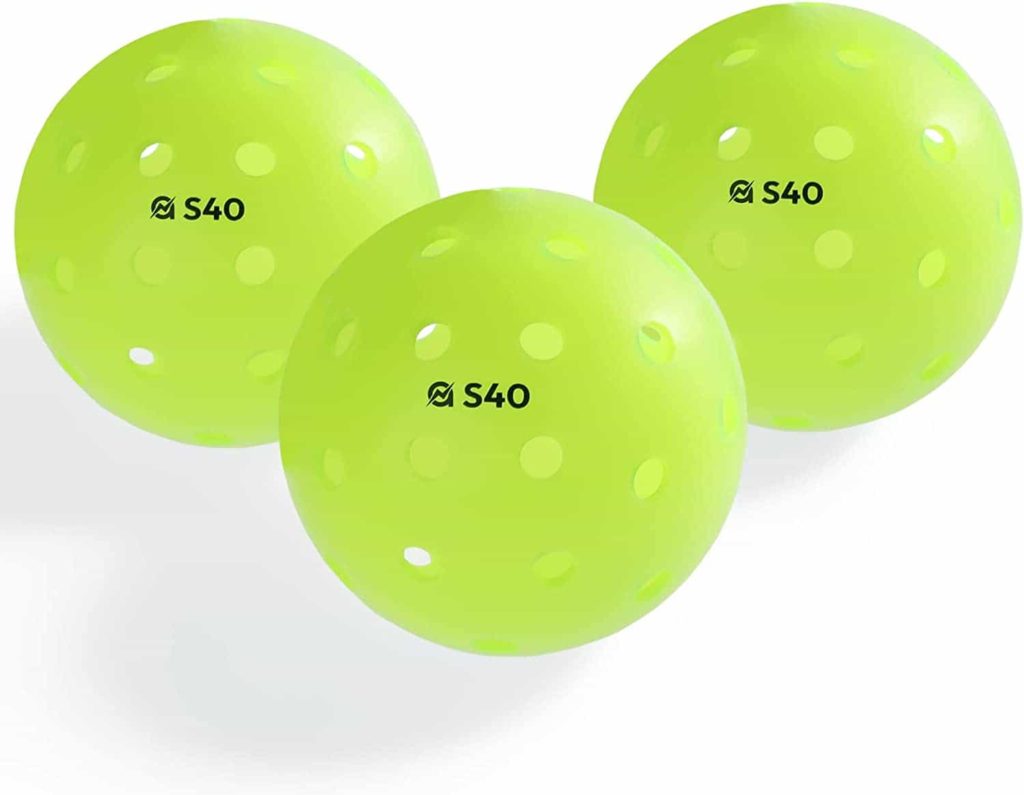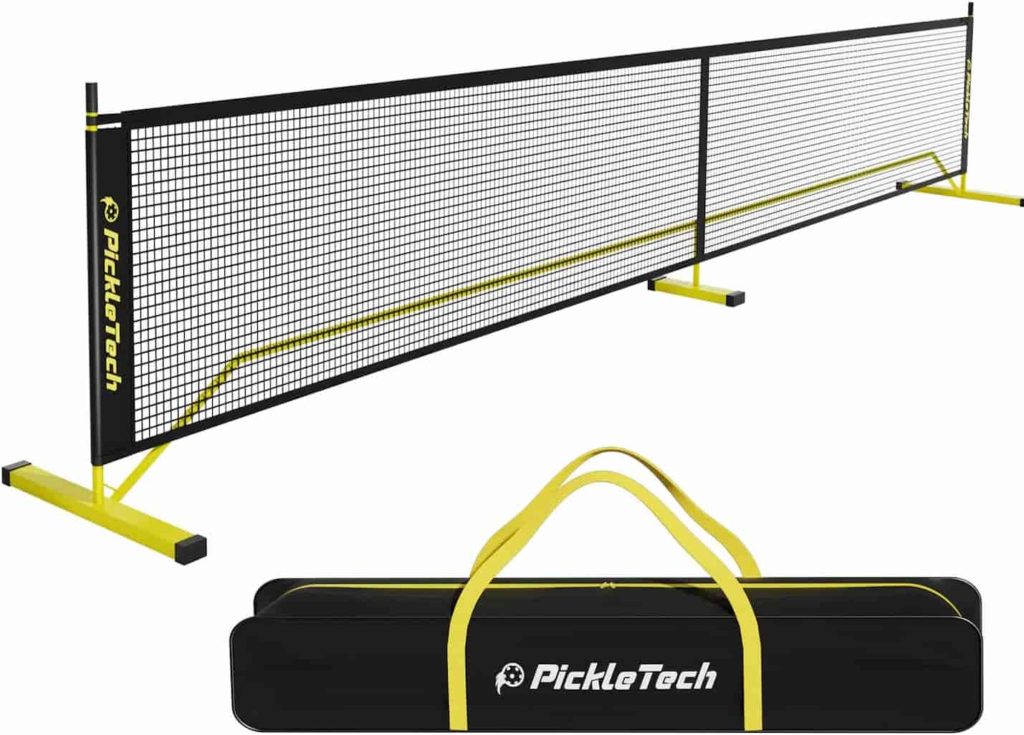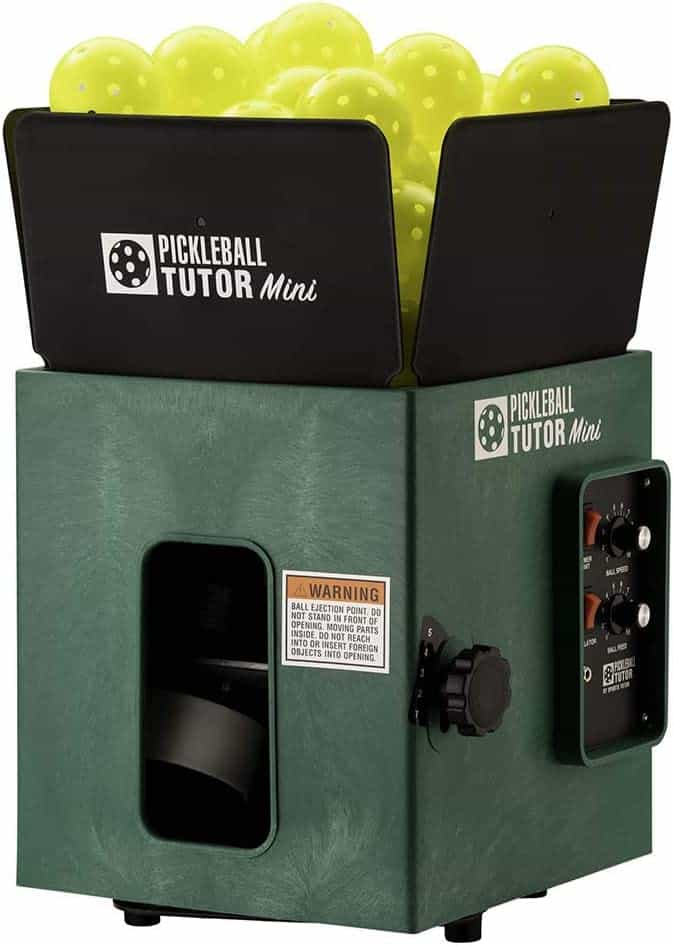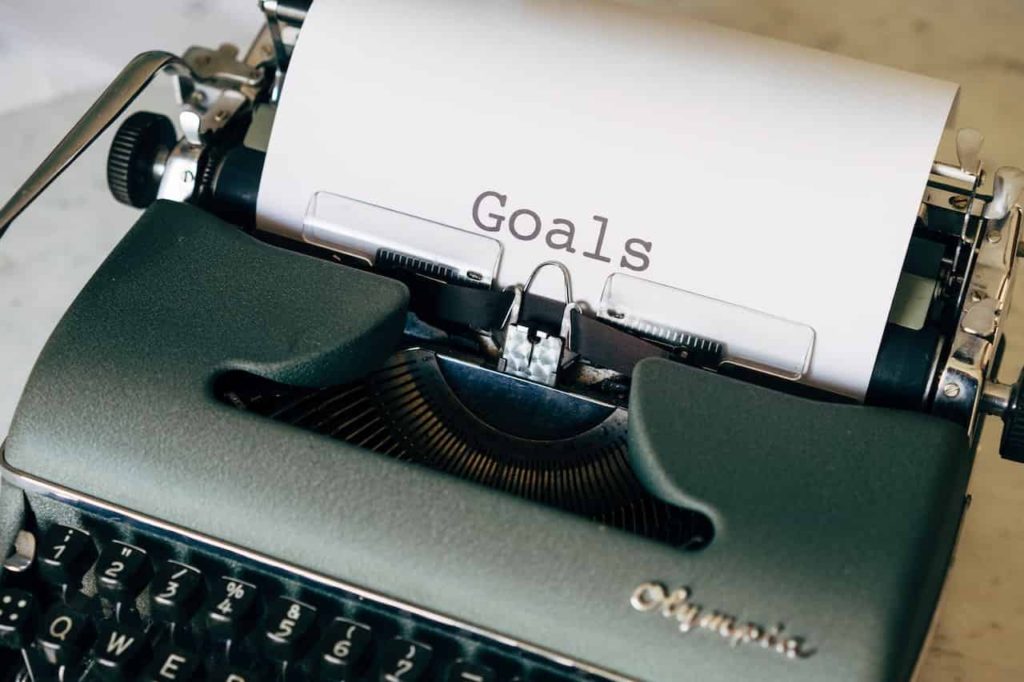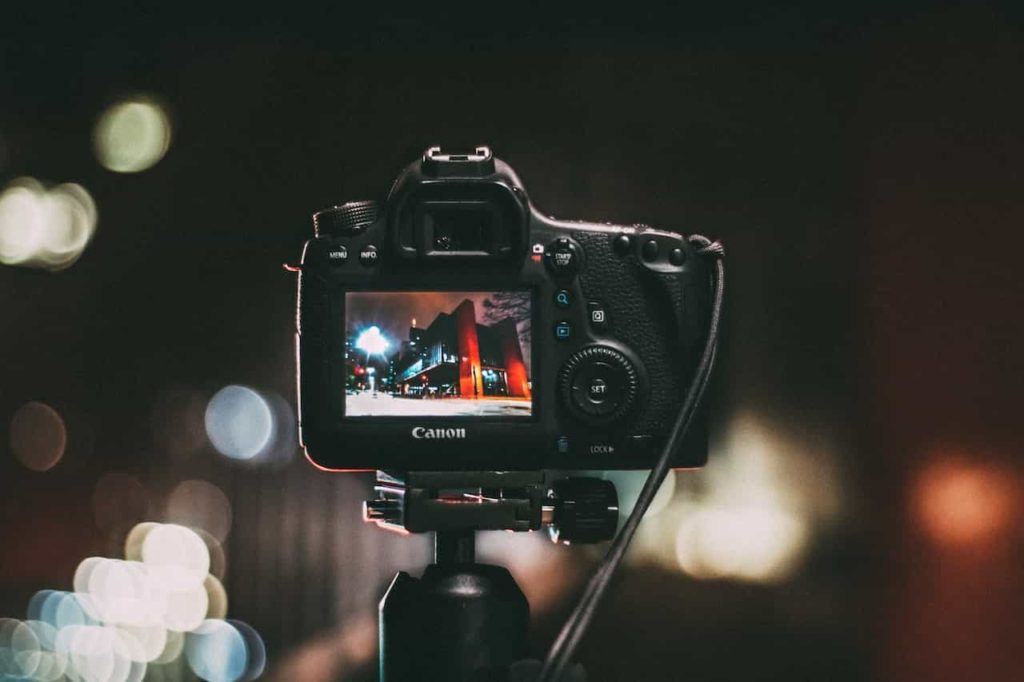iNTRODUCTION
Pickleball is a rapidly growing sport that combines elements of tennis, badminton, and ping pong to create a unique game that is enjoyed by people of all ages and skill levels. It’s played on a court that’s about the size of a badminton court, with a low net dividing it in half.
Players use paddles to hit a plastic ball back and forth over the net until someone makes an error. But what happens when you don’t have anyone to play with?
That’s where practicing alone comes in. While it may not be as much fun as playing with others, practicing alone can be an incredibly effective way to improve your game.
Explanation of Pickleball
For those who are unfamiliar with the sport, pickleball is similar to tennis in many ways. The court is smaller than a tennis court, and players use paddles instead of racquets to hit the ball. The ball itself is made of plastic and has holes in it, which allows it to travel at slower speeds than a traditional tennis ball.
The game can be played singles or doubles and begins with one side serving the ball over the net. The other side then hits it back until one team makes an error by hitting the ball out of bounds or into the net.
Pickleball has become increasingly popular in recent years due to its accessibility for people of all ages and abilities. It’s low-impact nature means that even seniors or those recovering from injuries can enjoy playing without risking further harm.
Importance of Practicing Alone
While playing with others can be more enjoyable than practicing alone, there are many benefits to solo practice. One advantage is that you can focus solely on your own improvement without worrying about keeping up with others or slowing them down.
Practicing alone also allows you to work on specific skills or weaknesses without feeling self-conscious or embarrassed. You can take your time and repeat drills as many times as necessary to master them.
Practicing alone can be a great way to relieve stress and clear your mind. It’s a chance to disconnect from the world and focus solely on improving your game, which can be incredibly rewarding.
Benefits of Practicing Pickleball Alone
In addition to the benefits mentioned above, practicing alone offers several other advantages. For one, it allows you to practice anytime, anywhere without having to rely on finding a partner or scheduling a time that works for both of you. Solo practice is also a great way to increase your stamina and endurance.
Without the breaks that come with playing with others, you’ll find yourself running more and hitting more shots in a shorter amount of time. This can help improve your overall fitness levels and make you better prepared for longer games.
Practicing alone can be an empowering experience. When you see improvement in your game due to your own hard work and dedication, it can give you a sense of accomplishment that’s hard to find anywhere else.
Equipment Needed for Solo Practice
Pickleball Paddle
The most important piece of equipment for pickleball is the paddle. When practicing alone, it’s essential to have a paddle that you’re comfortable with and that fits your playing style. Choose a paddle that fits your grip size and weight preference.
Many paddles come in different materials like graphite, fiberglass, or wood, so choose one that will give you the desired feel and power. It’s also important to maintain your paddle’s condition by keeping it clean and dry after each use.
Use a damp cloth to wipe away any dirt or sweat from the handle or surface of the paddle. If your grip gets worn out, consider replacing it with new tape or an overgrip.
Pickleball Balls
Pickleballs are unique because they have holes in them, which allows air to pass through and slow down their trajectory. When practicing alone, you’ll need plenty of pickleballs to keep up with your drills and exercises.
Choose high-quality balls that are durable and have a consistent bounce. It’s also important to understand what kind of ball you’re using as some balls may react differently on various surfaces.
Outdoor balls tend to be heavier than indoor balls because outdoor courts are often windier than indoor courts. It’s essential to always have extra balls on hand so you can continue practicing without interruption.
Pickleball Net or Wall
While not necessary for all drills, having access to a portable net or wall can enhance your solo practice routine tremendously. A portable net allows players to set up a court anywhere there is enough space available like parks or driveways.
A wall acts as an excellent alternative for those who do not have access to a portable net since it creates an opportunity for players to practice various shots against different angles repeatedly. While hitting against a stationary wall will not simulate actual gameplay or competition, it can help you develop your muscle memory and consistency.
Investing in a portable net or wall is not necessary, but it can improve your solo practice routine drastically. Consider investing in one if you plan to practice alone frequently, especially if you don’t have access to a local pickleball court.
Warm-Up Exercises for Solo Practice
Stretching Exercises
Before engaging in any physical activity, stretching is a crucial aspect of preparing your body for the strenuous movements that lie ahead. Proper stretching reduces the risk of injury, improves flexibility and range of motion, and ultimately enhances your performance. In Pickleball, it is essential to stretch the upper and lower body muscles.
Upper body stretches include shoulder circles, arm circles, chest stretch, and shoulder stretch. For lower body stretches focus on hip flexors, hamstring stretches, calf stretches.
Cardiovascular Exercises
Cardiovascular exercises are essential to get your heart rate up and increase blood flow throughout your body. It is necessary to complete cardiovascular warmups before playing Pickleball because it helps you reduce muscle fatigue while also priming your cardiovascular system for the workout lying ahead. Popular cardiovascular warm-up exercises include jumping jacks, high knees march in place or jumping rope.
Agility Exercises
Agility involves coordinated movements that combine balance, speed and quick movements that are crucial in Pickleball. Agility drills are designed to improve reaction time and footwork by training players on how to respond quickly and efficiently during a game situation. Some effective agility exercises include ladder drills (lateral movement), cone runs (forward/backward movement), side shuffles (sideways movement), crossover steps (quick change of direction) among others.
The Importance of Warm-Up Exercises
Even though these warm-up exercises may seem simple and straightforward at first glance, they are essential components of any practice routine. They have a significant impact on overall performance during pickleball gameplay. Warm-ups also assist with injury prevention by ensuring that all muscle groups involved in playing pickleball have been properly warmed up before gameplay. Additionally, incorporating these warm-up exercises into your solo Pickleball practice routine can help improve your overall Pickleball skills, both on and off the court.
Drills for Solo Practice
Solo practice drills can be beneficial in improving Pickleball skills. With a little creativity, players can design exercises that mimic the actions and movements required in live games. Here are some recommended drills for groundstrokes, serves and returns, and volleys.
Groundstroke Drills
Groundstrokes are among the most critical shots in Pickleball. A player’s ability to hit effective groundstrokes significantly contributes to their success on the court.
One drill that can aid in perfecting this skill is practicing hitting backhands and forehands against a wall or rebounder board. The exercise allows players to get more reps of their swings while improving shot precision and enhancing footwork.
Another groundstroke drill is the shadow swing where players simulate striking the ball repeatedly without an actual ball present. This drill helps increase muscle memory, improve technique, develop power, and strengthen footwork. In my opinion, the more often the paddle is in your hand, the more comfortable it feels and the more confident you feel.
Serve and Return Drills
The serve is another crucial part of Pickleball as it sets up a player’s initial shot for each point of play. Practicing serves alone requires finding an open area with enough space around it to avoid interrupting other players’ games. Players should practice serving from different points of the court while focusing on accuracy, power, spin, and consistency.
Return shots are equally essential as they determine how a player will respond after receiving serves from opponents. To practice returns alone, players need to stand behind the baseline on one side of the court while hitting balls served from different angles by tossing balls themselves or using a ball machine.
Volley Drills
Volleying is an essential skill in Pickleball as it involves hitting balls that are still high above net level before they have had a chance to bounce on either side of the court. One drill that can help improve volley skills is practicing volleys against a wall or rebounder board.
The exercise can aid in developing quick reflexes, strengthening hand-eye coordination, and improving accuracy. Another volley drill involves practicing the third-shot drop shot alone, which is vital when transitioning from the serve return to the volley. To practice this drill players should start at the baseline and hit soft shots over the net while focusing on placement, speed control, and spin.
Practicing groundstrokes, serves and returns, and volleys are crucial components of solo training. With enough time and effort spent perfecting these skills through drills like those mentioned above, players can significantly improve their abilities on the court.
Strategies for Solo Practice
Focus on Specific Skills or Weaknesses
One of the best ways to make progress in pickleball is by focusing on your specific skills or weaknesses. If you have trouble with a particular shot, such as a backhand volley, then spend more time practicing that shot than others. By targeting your weak points, you can improve your overall game and become a better player.
To identify areas where you need improvement, consider asking another player to watch and provide feedback on your game. They might notice something about your form or technique that you hadn’t considered before and offer tips for how to improve.
Use a Camera to Analyze Technique
Filming yourself during solo practice is an excellent way to analyze technique and form. By seeing yourself play from different angles, you can identify areas where there’s room for improvement. For example if you notice that your wrist is bent during certain shots or that your shoulders are not aligned correctly when serving, then make adjustments until you get it right.
Filming yourself while practicing will give you an excellent view of how you’re playing as well as help focus on correcting poor techniques.
Set Goals and Track Progress
Setting goals is an important part of improving in pickleball. When practicing alone, set specific goals for each session such as hitting 10 consecutive serves over the net or successfully executing 20 backhand volleys in a row without missing any. To track progress towards achieving those goals consider recording stats such as percent successful hit rate (overall), number of successful hits, unique shots like overhead smashes in any given time interval etc.. Having clear objectives helps focus efforts while also reducing distractions since there’s no need to change up what was working when it comes down to making progress.
Solo Practice Tips
To make the most of your solo practice sessions, consider creating a routine that includes warm-up exercises, drills, and focused techniques. Try to practice at the same time and place each day or week to establish a routine that will help you stay motivated and consistent. Additionally, consider recording yourself during practice sessions to analyze form and technique. Take breaks during solo practice sessions as needed. Rest between sets of drills or techniques so your muscles have time to recover before continuing with further practice. Additionally, adjust goals based on progress towards achieving them; if hitting 15 serves in a row feels too easy then bump up the goal until it becomes challenging again!
Challenges for Solo Practice
Time Challenges
One of the biggest challenges when practicing alone is managing your time effectively. Without a partner, there is no one to retrieve balls for you or keep track of the time. Therefore, you need to be disciplined and set a timer or use a clock to monitor your practice time. A common mistake made by solo players is not dedicating enough time to each drill or exercise. It’s important to focus on each drill and set aside enough time, so you can make meaningful progress. To overcome these challenges, create a plan that includes specific times for each drill or exercise and stick to it. Additionally, try using apps such as Coach’s Eye or Pickleball Tutor to help with timing and keeping track of your progress.
Accuracy Challenges
Improving accuracy is essential in pickleball because every shot counts towards winning and losing points. Practicing alone can be challenging because there is no one to give feedback on whether the shot was accurate or not. Fortunately, there are several ways you can address accuracy challenges when practicing alone. One method is using targets such as cones or boxes on the court where you aim for during practice sessions. You can also use chalk lines on the ground as guides when serving and returning shots. Another approach is recording yourself while practicing and analyzing the footage later using video analysis tools like Dartfish Express or Kinovea which help in identifying areas that need improvement.
Consistency Challenges
Consistency in pickleball involves executing shots repeatedly with precision throughout an entire game without mistakes while under pressure from opponents. Solo practice provides an opportunity to perfect your consistency by allowing focused repetition of drills over a prolonged period without distractions from opponents.
One way to improve consistency when practicing alone is by breaking down complex movements into small parts and perfecting them before moving on to the next. Practicing simple movements repeatedly will improve muscle memory and help build confidence in your abilities.
Another way to improve consistency is by varying drills or exercises regularly and keeping records of progress. This will help track improvements in specific skills over time and keep motivation high.
Conclusion
Key Points
Practicing pickleball alone is an excellent way to improve your skills. By using the right equipment, warming up with appropriate exercises, and engaging in various drills and challenges, you can strengthen your groundstrokes, serving abilities, volleys and overall game strategy. Practicing alone also allows you to work on specific aspects of your game that may need improvement and track your progress over time.
Encouragement to Practice Regularly
The benefits of practicing pickleball alone are clear and it’s essential to practice regularly. By setting aside time each week or even each day for solo play, you will see significant improvements in your overall game. It may be challenging at first to find the motivation to practice alone, but with persistence and dedication, it can become a habit that is both enjoyable and rewarding.
Final Thoughts on Pickleball Solo Practice
Solo practice in pickleball offers numerous benefits beyond skill improvement. It allows players to focus on their technique without distraction from others or feeling pressure during a game. Solo play also fosters a sense of independence and self-reliance while still allowing players to compete socially when they are ready.
If you wish to improve your pickleball play significantly or master specific skills such as groundstrokes or volleys – solo practice is highly recommended. It will serve as an excellent foundation for developing an all-around game that is sure to impress others while bringing personal satisfaction from the progress made along the way. So start today! And remember: “Practice makes perfect.”

